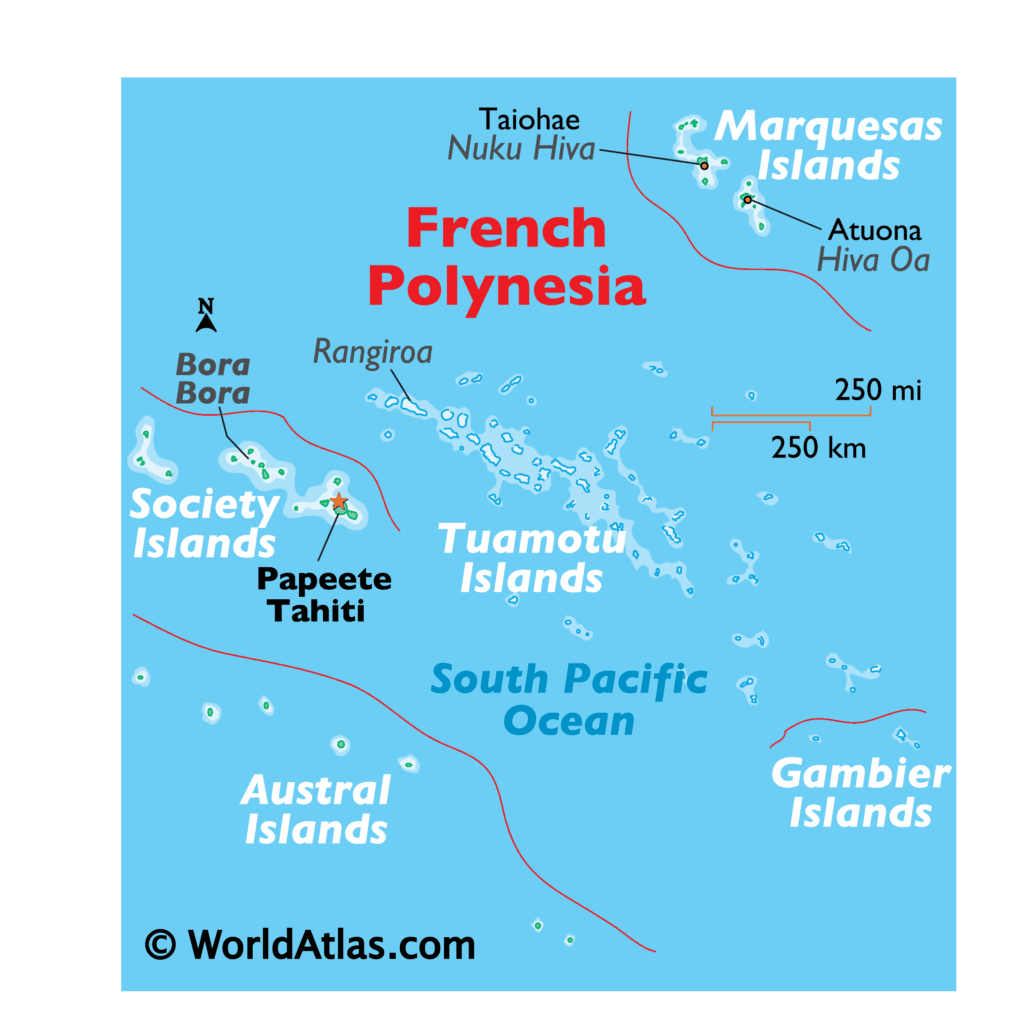A Week Aboard S/V Sabado: 5/26/2024 – 6/02/2024
Hi! Have you seen our latest YouTube video? You can check it out here. 🙂 It has taken us a while to get back into our routine after our Pacific Crossing, but real-time weekly blog posts are back!
Last Sunday, we decided to leave the crowded anchorage we’d called home for the past few days. The Marquesas Islands have not been what we expected. Although the dramatic mountains and beautiful hiking trails are alluring, the anchorages are deep, the water is murky, and the bottom is rocky. When anchoring, it’s not uncommon to let out every foot of chain you have, only to bring it back up and repeat the process again and again until you get your anchor to grab in a safe position. When we first arrived, we were told by several people that it took them over an hour to set their anchor. Then, once you are settled, you can’t see the bottom to get visual confirmation that your anchor is set, and you’re usually only using 2:1 or maybe 3:1 scope, which we’re not used to or particularly comfortable with. We’ve only found one island where the water is clear enough to see the bottom and only one anchorage on that island with a nice, sandy beach. So, we’ve found ourselves returning to this particular spot whenever we needed to run the watermaker or just relax. I guess we aren’t the only ones who have adopted this habit because it quickly filled up with familiar boats when we returned. We had scored a great spot in a sandy patch at the front of the anchorage, but as it got increasingly crowded, we decided to pull our anchor and move around the corner. To our surprise, it was empty. We’d heard stories about a local man who owns a house on the beach shoo-ing cruisers out of “his bay” after they had made landfall and stolen fruit from his trees, but we had no intention of going to shore or causing a ruckus. He came out waving his arms while we anchored, but seemed alright once he saw that we had ended up at a reasonable distance from shore.
I went for a swim, hoping to find some good snorkeling. There’s lots of sea life in the Marquesas; we’ve had manta rays swimming right next to the boat, seen black tip sharks, schools of fish… but I haven’t found any thriving coral. This swim was no different. I saw two sea turtles, but no coral, just rocks.

We got a good night’s sleep and began prepping the boat for an overnight sail to Nuku Hiva, where we hoped to re-fuel before sailing to the Tuamotus, a remote archipelago of atolls that promises plenty of clear water, sandy beaches, and colorful coral reefs.

We left around 5pm, gawking at the view we were leaving behind. It is undeniably beautiful here!

Using our main on its first reef and the jib, our SOG was ~7.5kn- much faster than we expected. At this rate, we’d arrive in the dark. We watched the sun slip into the sea and had dinner together in the cockpit while discussing our night shift schedule. Ray took the first 3hrs. By the start of my shift, we had slowed down significantly. We arrived at sunrise the following morning.

The anchorage was huge and filled with other boats, but everyone was reasonably spaced out, a refreshing change from the cramped anchorages we’d visited so far. The bottom was mud, so our anchor grabbed right away. It was pretty rolly, but we weren’t planning to stay for long. We took a nap and then headed to shore.
We walked along the main road until we found the local chandlery and the grocery store. We got a few small parts we needed and some food, but not much. Still, the only fresh vegetables we could find at the store were carrots and onions, but this store had more frozen options than the one in Hiva Oa. We grabbed some ground beef, incredibly expensive chicken, eggs, and a bag of frozen veggies. On the way back to the dinghy, we visited a fruit stand and got some pamplemousse, mangos, bananas, limes, tomatoes, and a giant zucchini!

We dropped the groceries off at the boat and filled the dinghy with empty jerry cans. There’s no fuel dock in the Marquesas, so I dropped Ray off near a gas station and drove the dinghy around in circles until he returned with full jugs and an ice cream bar for me. ☺️

Ray transferred the fuel into our tanks while I washed and put away our produce. We were ready to move on. We had a cocktail on the bow together and discussed our plan. We left the next day after lunch.


We had conditions similar to those at the end of our Pacific crossing: sails shading the solar panels and sloppy seas keeping us from running the watermaker. We couldn’t make water in the muddy anchorage we’d just left, so we set sail with 20 gallons, hoping to make some underway… It’s a good thing we got so much practice conserving resources on our way over here!
We passed an unmarked FAD just before sunset. It was hard to see; we’re glad we didn’t run it over! Seconds later, we caught a fish. I watched closely for other FADs at the helm while Ray pulled in and filleted a yellowfin tuna.

It was miserably hot that night and too rough to open the hatches. We joked while switching shifts to “enjoy your time at the sweat lodge!” or “have a nice sauna session!” when it was time for one of us to attempt to sleep inside.
The next day was uneventful. We didn’t do anything besides eat, sleep, and keep watch. We caught and released a small bonito tuna in the afternoon, but that’s about it! The wind began to die after sunset. When I started my first night shift, our SOG was 3.5kn. We bobbed around in the dark, slowly making our way toward our destination. We chose not to turn on an engine in the name of fuel conservation- it’s challenging to refuel where we’re headed, and although we were going slow, it wasn’t unpleasant.
When I came up for my sunrise shift, Ray pointed out a black blob in the lower left corner of our chartplotter- a common indication that the screen was failing. Since it appeared, it has doubled in size. It’s only a matter of time before it takes over the entire display.

We lost the last bit of wind and started an engine shortly after that. Thankfully, the sea state had calmed down as the wind dissipated, so although we were bummed about motoring, we were able to get some extra power into the batteries and run the watermaker. We used the engine on and off all day, periodically flying the gennaker or the code zero when we could.
Last night, the wind was coming from exactly where we were headed. It felt like a cruel joke! These are the rare conditions people pray for to return to the Marquesas, but we were trying to leave! We begrudgingly dropped the sails and motored into it.

It rained most of the night, and the sea state took a turn for the worse around 4am. Even with both engines on, our SOG was barely 4.5kn. We veered off course to soften the blows from the waves and decided to reevaluate during daylight.
It’s now daylight, and I’m here to report that things have not improved. We sailed for a few hours, planning to tack our way on, but realized it would add days to our trip, and we’d likely end up missing the Tuamotus altogether. The weather forecast for this trip was 180° off. So, now we are burning a ridiculous amount of fuel running both engines to slowly motor into the wind and waves. We’ve also discovered that B&G has stopped making the Zeus MFD, so replacing our failing screen just became a lot more difficult…
As I’m posting this, the wind appears to be shifting. Everyone cross your fingers it sticks!


2 Responses
HI – sorry everything is so difficult. but look at the scenery. that’s is what i am doing.
That’s the best perspective! ?